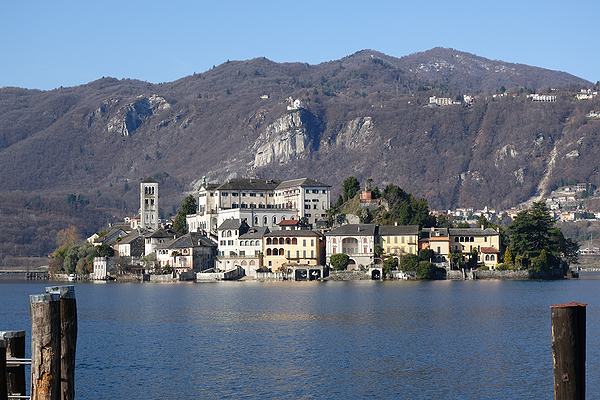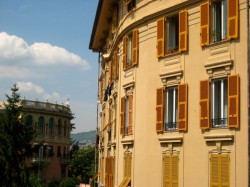ITALY CHRONICLES
Latest Posts

New! Italy Photo Contests – Show Off Your Photos of Italy
If you, like me, you think Italy is extremely photogenic, you might be interested to hear that Italy Chronicles is to run photo contests. The
Italian Politics – Still a Mess
Here’s a roundup stroke overview of what’s going on in the decidedly odd world of Italian politics. Broadly, there are three political factions in Italy,
Wild Boar Hunting in Italy
Ever thought about wild boar hunting in Italy? Maybe not but perhaps you might like to. Italy has a bit of a problem with wild
Berlusconi Heart
On Thursday in Italy headlines were dominated by the news that Silvio Berlusconi, a former and controversial prime minister, required an urgent heart operation and had
Money People – The World’s Biggest Problem
What’s that old saying? Ah yes, “money is the root of all evil”. From what is happening in Italy and elsewhere around the world, there
Italian Politics – Still a Mess
Here’s a roundup stroke overview of what’s going on in
Wild Boar Hunting in Italy
Ever thought about wild boar hunting in Italy? Maybe not
Berlusconi Heart
On Thursday in Italy headlines were dominated by the news
Money People – The World’s Biggest Problem
What’s that old saying? Ah yes, “money is the root
Italy
Italy’s Slot Machine Mania Delights the Mafia
They are everywhere. No self-respecting Italian cafe or coffee bar seems to be without video poker slot machines. Kids find them fascinating, while an increasing
Italy’s Amy Winehouse
Giusi Ferreri, a 29 year old from Palermo in Sicily, has been likened to English bad girl singer Amy Winehouse. This comparison with Amy Winehouse
Cinque Terre’s Hidden Gems: Beyond the Famous Villages
Cinque Terre, with its famous villages nestled along the picturesque Italian Riviera, is a highly sought-after destination for travelers. However, beyond the well-known villages of
Unveiling Fendi’s Timeless Craftsmanship: A Legacy of Fur Excellence
Fendi, a renowned fashion house, is widely recognized for its exceptional legacy in the world of fur. The brand’s commitment to timeless craftsmanship has solidified

Milan’s Ecopass To Evolve
First of all, you should know that Milan introduced a “congestion charging” system, known as the Ecopass, back in 2008. Well, the Ecopass “congestion charge”
Sustainability in Italy: Locals Embrace Green Living
Sustainability is a global concern, and Italy is taking significant strides towards going green. The importance of adopting sustainable practices has become crucial, considering the
Mafia v Berlusconi
In court today ex-mafia hit man Gaspare Spatuzza is giving
Italian Culture: Italians, the Good and Not So Good
What I love about Italians and what I don’t like about Italians.
Properties

The Admirable Admiral’s Villa in Taormina
If you know your history pretty well, you may be aware that one of England’s most celebrated Admirals possessed a rather charming villa in the scenic Sicilian town of Taormina.

How to Find Property for Rent in Italy
Maybe you are coming to Italy to work or study here for a while, in which case, you’ll need somewhere to live. If that’s the
House For Sale near Milan
Gaetano Salvo, friend and Blog from Italy researcher wants to sell his house. For those who might be interested, or may know of someone or

How to Find Property for Rent in Italy
Maybe you are coming to Italy to work or study here for a while, in which case, you’ll need somewhere to live. If that’s the

The Admirable Admiral’s Villa in Taormina
If you know your history pretty well, you may be aware that one of England’s most celebrated Admirals possessed a rather charming villa in the scenic Sicilian town of Taormina.
Places to stay in Italy
Villa Miller Bed and Breakfast, Puglia, Italy
Located well off the main road in the depths of the Puglia countryside, Villa Miller the only sounds which disturb guests are those of the crickets and the ringing of the bells worn by the areas cow and sheep population.
Chaplin Bed and Breakfast Rome
Perfectly located in a safe and quiet but extremely central Rome neighborhood, the Chaplin Bed and Breakfast Rome is the ideal base for your Roman holiday.
Casa Villatalla B&B, Liguria
By far the most important members of the Casa Villatalla household are Nellie (an elderly but loveable chocolate Labrador), Bonnie, a fluffy and rather scatty American Spaniel, and Pickle, aneccentric cat who walks like John Wayne.
Chaplin Bed and Breakfast Rome
Perfectly located in a safe and quiet but extremely central Rome neighborhood, the Chaplin Bed and Breakfast Rome is the ideal base for your Roman holiday.
Casa Villatalla B&B, Liguria
By far the most important members of the Casa Villatalla household are Nellie (an elderly but loveable chocolate Labrador), Bonnie, a fluffy and rather scatty American Spaniel, and Pickle, aneccentric cat who walks like John Wayne.

